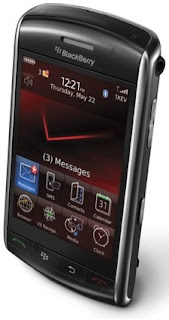Research In Motion (RIM) has ruled out faulty batteries as the likely cause of keyboard heating up during recharging of its BlackBerry Bold smart phones sold in Japan.
Japanese mobile phone operator NTT DoCoMo had stopped sales of BlackBerry Bold after about 30 users reported the keyboards heated up during recharging. DoCoMo has sold around 4,000 Bold units in just 7 days. The phone is designed to provide access to DoCoMo's 3G network and also includes Wi-Fi and GPS navigation capabilities.
Initially, it was reported that the overheating of the BlackBerry Bold was related to battery problems. However, RIM said that the battery wasn't the source of the problem. RIM has said in a statement that while "analysis of the devices in question has allowed [RIM and DoCoMo] to rule out a battery problem, the root cause remains under investigation."
"This issue appears to be specifically limited to the BlackBerry Bold devices sold in Japan since last week and sales of BlackBerry Bold devices in other countries are unaffected by this matter," RIM said in a statement.
It is suspected that the problem could be related to software or customization of the phone for the local market, where the device has seen problems in the past.
"The temperatures appear to have remained within the safety range of regulatory standards." Whatever the problem may be, RIM has to fix it quickly, otherwise it may lose a significant market share.
Japanese mobile phone operator NTT DoCoMo had stopped sales of BlackBerry Bold after about 30 users reported the keyboards heated up during recharging. DoCoMo has sold around 4,000 Bold units in just 7 days. The phone is designed to provide access to DoCoMo's 3G network and also includes Wi-Fi and GPS navigation capabilities.
Initially, it was reported that the overheating of the BlackBerry Bold was related to battery problems. However, RIM said that the battery wasn't the source of the problem. RIM has said in a statement that while "analysis of the devices in question has allowed [RIM and DoCoMo] to rule out a battery problem, the root cause remains under investigation."
"This issue appears to be specifically limited to the BlackBerry Bold devices sold in Japan since last week and sales of BlackBerry Bold devices in other countries are unaffected by this matter," RIM said in a statement.
It is suspected that the problem could be related to software or customization of the phone for the local market, where the device has seen problems in the past.
"The temperatures appear to have remained within the safety range of regulatory standards." Whatever the problem may be, RIM has to fix it quickly, otherwise it may lose a significant market share.




